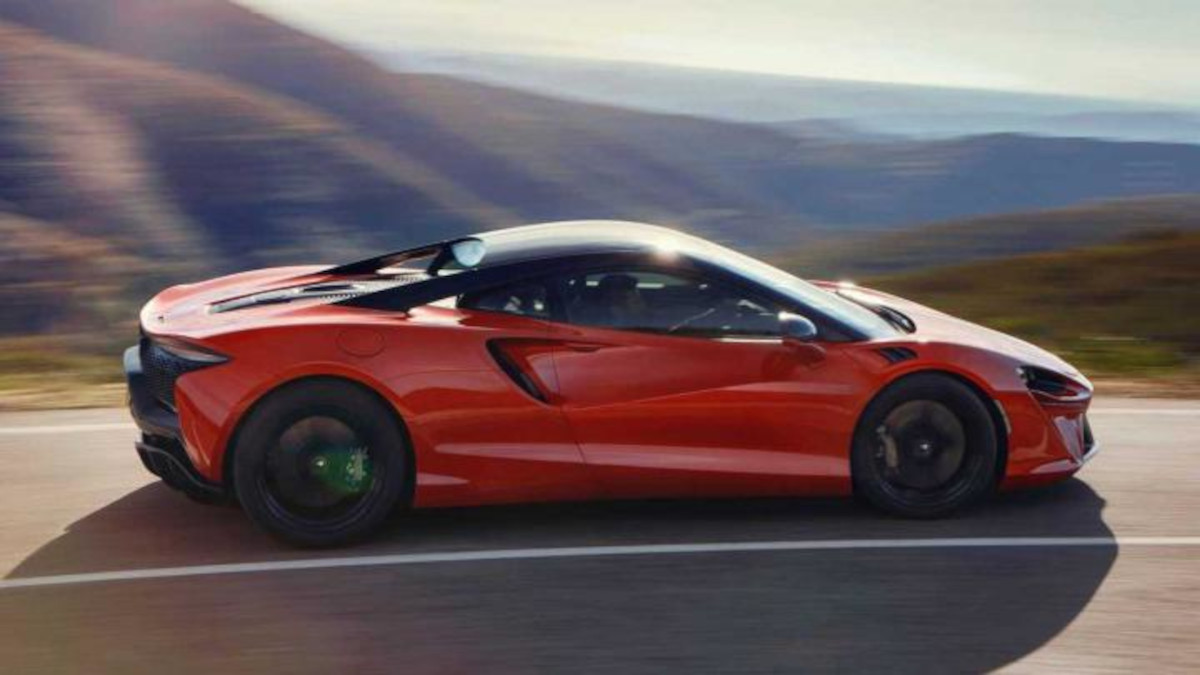McLaren has said it will not be making a complete shift to electric cars anytime soon. The company is still focused on its core values of lightweight performance and engineering excellence, and it believes that electric cars are not yet able to match the performance of its gasoline-powered vehicles.
Hybrid
It will continue developing hybrid cars, but it is not yet clear when to launch its first fully electric car. The company has said that it will wait until battery technology has improved to the point where electric cars can match the performance of its gasoline-powered vehicles.

In the meantime, McLaren is focusing on developing new hybrid cars that combine the performance of its gasoline-powered vehicles with the efficiency of electric cars. The company’s latest hybrid car, the Artura, has a combined output of 671 horsepower and can travel up to 11 miles on electric power alone.
Given the trend towards electrification in the automotive industry, McLaren’s decision to go slow on the shift to electric cars is a bit surprising. However, the company is known for its focus on performance, and it is clear that it is not willing to compromise on that to be the first to market with an electric supercar.
Here are some quotes from McLaren executives about the company’s plans for electric cars:
- “We are not going to rush into electrification. We want to make sure that we do it right and deliver the performance that our customers expect.” – Paul Harris, Managing Director – APAC and China, McLaren Automotive.
- “We believe electric cars can be just as exciting and engaging as gasoline-powered cars, but the technology is not yet there. We are waiting for battery technology to improve before we fully commit to electric cars.” – Mike Flewitt, CEO, McLaren Automotive.
Pros and cons of McLaren’s approach to a slow shift to electric cars can be examined based on various factors. Here are some potential pros and cons:
Pros:
- Performance and driving experience: McLaren is known for its high-performance sports cars, and a gradual shift allows them to maintain their focus on delivering exhilarating driving experiences. By incorporating hybrid technology, they can enhance performance while reducing emissions and maintaining the characteristics enthusiasts appreciate.
- Technological advancements: A slower transition allows McLaren to continue developing and refining hybrid technology, potentially leading to more efficient and advanced powertrain solutions. This approach allows them to stay at the forefront of automotive innovation and push the boundaries of performance and efficiency.
- Existing infrastructure and customer base: By gradually introducing hybrid models, McLaren can leverage its existing infrastructure, including manufacturing facilities, supply chains, and service networks. This approach also helps ensure a smooth transition for their loyal customer base, many of whom may still prefer traditional internal combustion engines.
- Market demand and customer preferences: Electric cars are gaining popularity, but there is still a significant market demand for high-performance sports cars with traditional engines. By slowly incorporating hybrid technology, McLaren can cater to customer preferences while meeting evolving emissions regulations.
Cons:
- Environmental impact: A slower transition means McLaren’s fleet will continue to rely on internal combustion engines, which emit greenhouse gases and contribute to air pollution. Critics argue that a faster shift to electric cars would have a more immediate and substantial positive environmental impact.
- Competitor advantage: Delaying a full transition to electric cars may give competitors an advantage in the emerging electric vehicle market. Other manufacturers investing heavily in electric vehicle technology may capture a larger market share and establish themselves as leaders in the industry before McLaren fully commits to electric vehicles.
- Regulatory challenges: Governments worldwide are implementing stricter emissions regulations, potentially impacting McLaren’s ability to sell their vehicles in certain markets. A more accelerated shift to electric cars would position them better to comply with these regulations and avoid potential market restrictions or penalties.
- Consumer expectations: As electric vehicles become more common, consumer expectations may shift towards environmentally friendly and sustainable transportation. McLaren’s gradual approach may be viewed as lagging behind industry trends, potentially affecting their brand image and appeal to environmentally conscious customers.
Conclusion
In conclusion, McLaren’s decision to take a slower approach to a complete shift to electric cars can be seen from both positive and negative perspectives. By gradually incorporating hybrid technology into its vehicle lineup, McLaren can maintain their focus on delivering high-performance sports cars and refining their powertrain solutions. This approach allows them to leverage their existing infrastructure and cater to customer preferences for traditional engines while meeting evolving emissions regulations.
Positive
On the positive side, McLaren’s gradual transition allows them to prioritize performance and driving experiences, capitalize on technological advancements, and maintain their customer base. It also allows them to develop hybrid technology further and push the boundaries of automotive innovation.
However, there are potential drawbacks to this approach. It may have an environmental impact as their fleet will continue to rely on internal combustion engines, potentially contributing to greenhouse gas emissions and air pollution.
Concerns
It also raises concerns about market competition and the potential advantage other manufacturers focusing on electric vehicles may gain. Additionally, regulatory challenges and evolving consumer expectations towards sustainability could threaten McLaren’s brand image and market positioning.





































